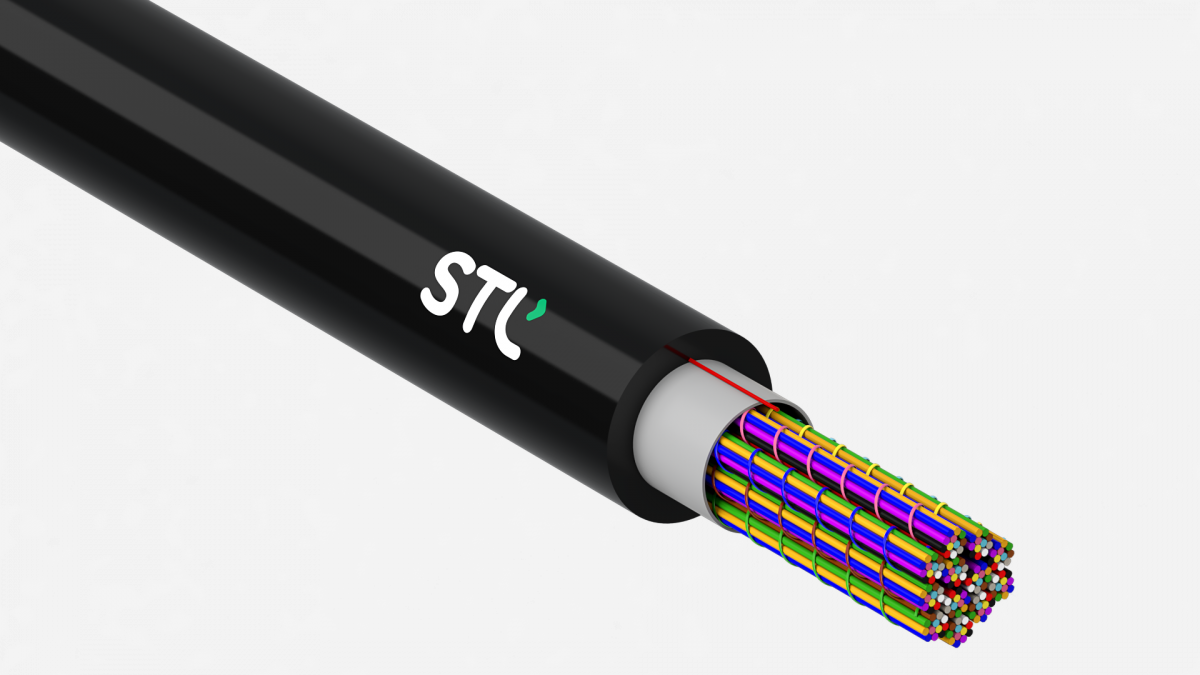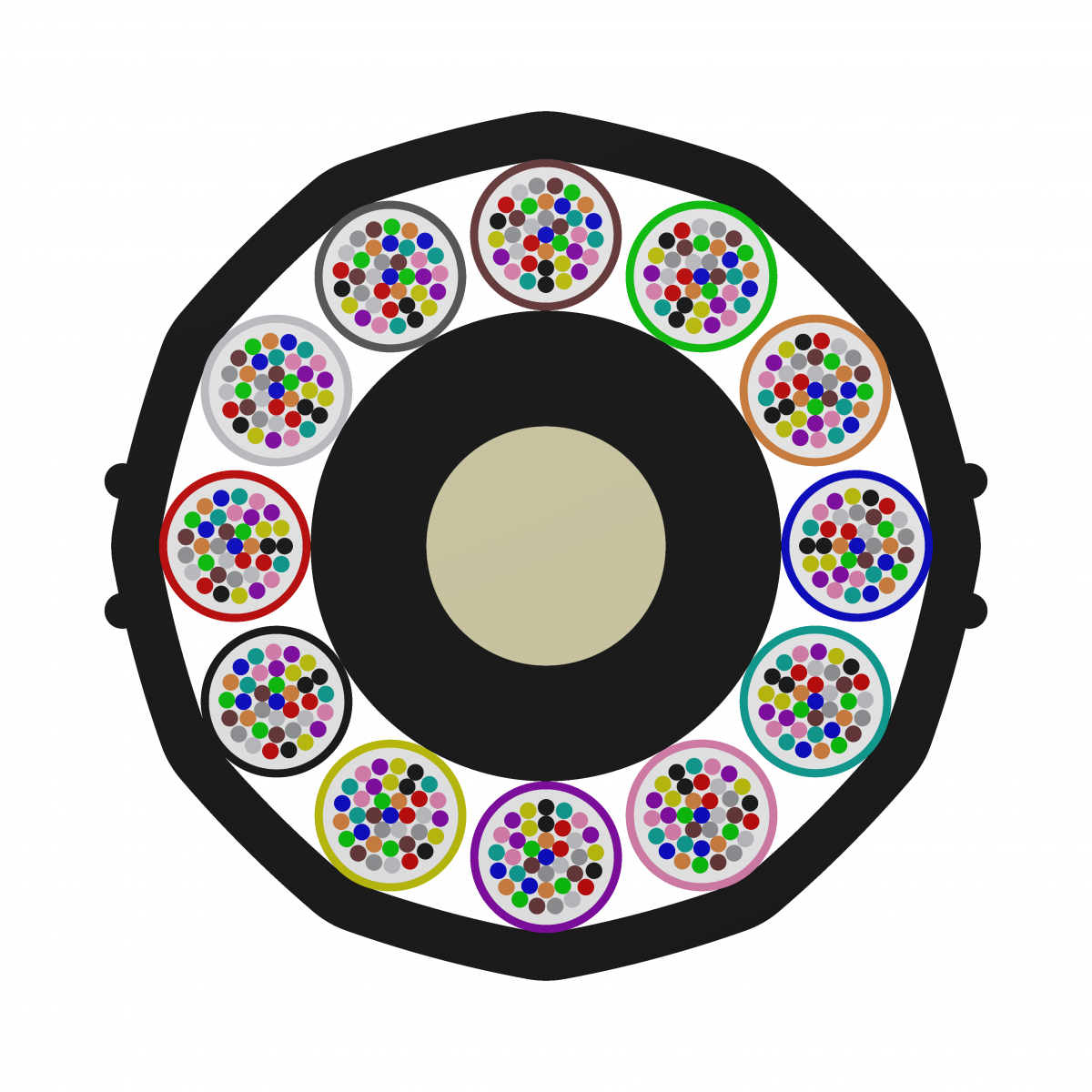In 2021 we face a new world of communication, partly due to Covid-19, according to Jitendra Balakrishnan, CTO, connectivity solutions at Sterlite Technologies (STL). Every network provider had to ‘pivot almost overnight to meet the steep rise in demand’ for ‘reliable, robust and resilient broadband connection’, he said, stressing ‘this ubiquitous connectivity will require increased bandwidth and a symmetric uplink-downlink.’
And while bandwidth demand may seem endless, space to install fibre optic cable is not. So companies such as Sterlite are driven to provide denser fibre products to help resolve this dilemma.
Demand arising from greater remote working comes on top of existing expectations that Fibre-To-The-Home (FTTH) and 5G wireless networking technologies will soon be adopted worldwide. For example, each 5G small cell antenna sites will need to be connected by fibre optic cables. The US Fiber Broadband Association estimates that nearly 1,400,000 miles of fibre will be needed for this in just the country’s 25 biggest metro areas. To fulfil those needs at minimum cost, suppliers now offer the densest fibre ever available – but face challenges in going further.
There is a strong business case to push these limits, explained John George, senior director of solutions and professional services at OFS. ‘Service providers using the right high density fibre technologies can reach customers faster, at lower cost,’ he said. Any extra cost of higher density fibre is a worthwhile investment, if deployed where there are networks already. ‘The cost of new build construction is usually extremely high,’ George said.
Working together
However, reliable and durable higher density cabling requires higher grade manufacturing, materials and fibres, revealed George. ‘Whenever we reduce the thickness of protective coatings and jackets encasing the fibre itself, greater stress may be placed on the fibre,’ he explained. ‘We design, develop, and manufacture the fibre, cable, connectivity and splicing equipment to work in concert.’
Ian Griffiths, telecom R&D director at Prysmian Group, explained that packing optical fibres into high-density optical cables induces lateral stresses that bend them, attenuating more light. Attenuation ‘can be high if the fibre type is not selected properly for the application’, he said. Prysmian has improved its optical fibres by optimising the glass coatings to reduce their sensitivity to this bending.
Over the last decade the company has also worked to reduce diameters from 250 to 180µm. ‘Last year we launched the first cable with this new fibre technology,’ Griffiths said. ‘There are a number of new cable developments in progress that are due to launch shortly using this fibre. The development of these optical fibres and special coatings is very time consuming.’
However, he added that it helps minimise the cost of civil works to lay new infrastructure, which can be almost 50 per cent of the total cost of ownership to network operators. ‘The ability to use your remaining duct space and pack as many fibres as possible into it is crucial in avoiding or reducing these costs,’ he said.
Untying ribbon’s potential
This motivation applies in converged metro network applications, where traffic for 5G, FTTH and Fibre-To-The-Business (FTTB) networks are aggregated together, Griffiths continued. In such networks, densification might apply to low fibre count cables, such as microduct cables. ‘Smaller duct and microduct cables are also being driven to be much denser,’ Griffiths said. ‘Our densest cable to date is a 576 fibre microduct cable that offers 10.9 fibres per square millimetre.’ He stressed that this shows how important density is to outdoor networks.
Data centres use Prysmian’s 6,912 fibre FlexRibbon cables because of the sheer bandwidth that they require. However, technology such as this is also being used in some carrier networks. ‘We do see smaller FlexRibbon fibre count cables used in carrier networks,’ said Griffiths, ‘due to its ability to offer faster splicing over traditional single fibre cables. It has benefits over existing ribbon cables, in that it is easier for installers to use due to its ability to bend in any axis.
‘We currently see the balance staying similar, with maybe more take up for data centre applications globally to replace standard ribbon, but most carrier networks outside of the USA, UK and Australia remaining with standard cable technologies.’
The installation advantage comes because ribbon cables are easier to handle than flat ribbon cables, while they can be spliced 12 fibres at a time. Even then very high count fibres can take a long time to splice, Griffiths conceded. ‘You need to remember that the benefit of installing a 6,912 fibre cable is the saving on installation time compared to four 1,728 fibre cables – at the end of the day, the splicing time is the same,’ he said. ‘That said, we are currently working on solutions that can reduce this to offer customers large benefits in installation time.’
OFS likewise offers its Rollable Ribbon cables in formats up to 6,912 fibres, with density of 10.5 fibres per square millimetre. ‘Hyperscale data centre customers deploy this type of product for short distances to connect buildings each with hundreds of thousands of fibre connections,’ George said. ‘In North America we have customers deploying AccuTube+ Rollable Ribbon 1,728 and even considering 3,456 fibre cables in metro rings. In the European metro areas, the primary need is for 432 fibre cables or smaller. We offer the MiDia loose tube, loose fibre duct cables up to 432 count with 250µm outer diameter fibres, or doubling the density to 864 fibres using our 200µm fibres.’

Image credit: OFS
Such loose tube cables still represent the vast majority of operator designs, said George. ‘This has been driven generally by loose tube cables getting smaller and following microduct applications where traditionally ribbon designs would not fit.’ However, new rollable ribbon designs, combined with the ever increasing need for higher fibre counts, ‘have forced operators to re-evaluate the benefits of ribbon’, George added. To address this need, OFS recently launched its RollR200 Micro cable.
Saving millions
‘In the distribution part of the FTTH network we can fit more fibres in a duct, and also reduce the bend radius to fit in smaller handholes and enclosures to reduce digging and shrink the visual footprint,’ said George. Small outer diameter cables allow the amount of cable on a single reel to reach further. This reduces the number of splice points in a metro or long haul network. ‘Savings of millions of Euros per kilometre may be possible by eliminating the need for new duct placement in a dense urban area,’ added George. ‘For rural FTTH our AllDielectric Self-Supporting (ADSS) designs use 200µm fibres to reduce cable weight, reduce sag, and increase the span length between poles.’ High density technologies help fibre enter buildings through narrow spaces, using OFS’ EZ-Bend 2.5mm bend radius fibre, which can be stapled around sharp corners.
Slimmer cables both use duct space more efficiently and enable networks to be deployed faster, added STL’s Balakrishnan. ‘The balance is tilting towards more fibre used in any given segment of the network,’ he said. ‘This also needs faster deployment methods, which, in turn, need ribbons.’ STL’s Celesta family of optical fibre ribbon cables contain up to 6,912 fibres, and its densest cables use fibre with a coating diameter of 200µm. Balakrishnan highlights that the 432 fibre cable is 4.5 times as dense as traditional loose tube cable, but with the same diameter. Operators install up to 2km of this cable per hour, he adds. Another way of making slimmer cable, he said, is to move to multi-core fibre (MCF). ‘A four-core MCF packs in four times the capacity,’ he stressed.
STL’s rollable ribbon has both bend-insensitive properties and backward compatibility to legacy fibre. Balakrishnan explained: ‘The cables have no preferential bend, which makes them easy to handle. To further help smooth installation, the STL Academy trains a workforce to assist in end-to-end installation and deployment of all our fibre cables, including the dense and complex ones’ he emphasised. ‘We are also witnessing exciting developments in low diameter fibre and multicore fibre, as well as in various aspects of cable design that enable slimmer cables, making them easier to use.’

Image credit: STL
As the highest fibre count cables, ribbon cables are getting special consideration from glass science giants Corning, explains Mohamad Farhat, market and technology development manager for outside plant cables. ‘When dealing with high fibre counts in cable, there are several features that support efficient connections,’ he explained. ‘The ability to identify both individual fibres and sub-units in the cable is critical to efficient connections. In addition, the ability to route those subunits and fibre easily in the network hardware reduces time to install and increases system flexibility.’
Defining times
Corning’s RocketRibbon cable provides routable sleeves or colour-coded sub-units that enable improved identification. ‘The routable sleeve and sub-unit bundle designs allow for direct and easy routing to splice trays, without the need for additional materials, ribboning processes or furcation kits,’ said Farhat. ‘These unique sub-units make fibres in the RocketRibbon cable easy to manage, identify and trace, which significantly improves install times and lower ongoing maintenance costs.’
Farhat asserts that bundling RocketRibbon with Corning’s data centre interconnect can significantly reduce installation time. That’s in part because installers don’t have to divide cable, instead routing bundles of sub-units inside an optical splice enclosure. ‘In carrier network applications the cables, when combined with the company’s Fibre Optic Splice Closure 2178 family, create futureready solutions that provide easier installation, excellent system flexibility and reliable protection for all deployments,’ he added.
Binderless FastAccess technology can also be used for easy access to cables for connection, Farhat revealed. The company has combined this with armoured cables in its RocketRibbon products up to 864 fibres. FastAccess reduces installation time compared to existing solutions, said Farhat, and its compact designs mean that it can fit twice as much fibre into each duct. It also retains ‘a backward-compatible and proven industry-standard ribbon design.’
But Farhat emphasised high fibre counts don’t always equate to high density. ‘Some of the densest cables are micro-cables that have relatively low fibre counts. The density in this case allows installation of more fibres in a constrained space. An example of these types of cable is the MiniXtend HD cables that take advantage of lower outer diameter fibres to deliver lower outer diameter cables.’ That can enable faster installations because the narrower fibres can be rapidly installed in narrow ducts, blown in and lifted through by compressed air.

Image credit: Corning
In high density cables, fibres need to go beyond being small and resilient to bends incurred within a smaller form factor. ‘Splicing compatibility needs to be maintained to ensure efficient deployment,’ explains Roshene McCool, Corning’s market and technology development manager for single mode fibre and bend fibres. ‘Some bend-resilient fibres compromise on splicing compatibility to deliver bend resilience, thus reducing deployment efficiency, with the potential for costly, time-consuming rework of mismatched splices.’ Corning’s SMF-28 products ensure splice compatibility with each other and with legacy fibres in networks, McCool said.
All of these types of next-generation fibre and cable products address a new phase in growth of communications networks worldwide that is happening today, stressed STL’s Balakrishnan. However, a ‘large number of practical challenges’ come with that growth, he warned. New fibre products will be essential at meeting those challenges. ‘There is a palpable excitement at the shake-up of the traditional order,’ Balakrishnan said. ‘The advances we will see in the next few years will be huge. These are defining times, and we are extremely excited to be involved in them.’


